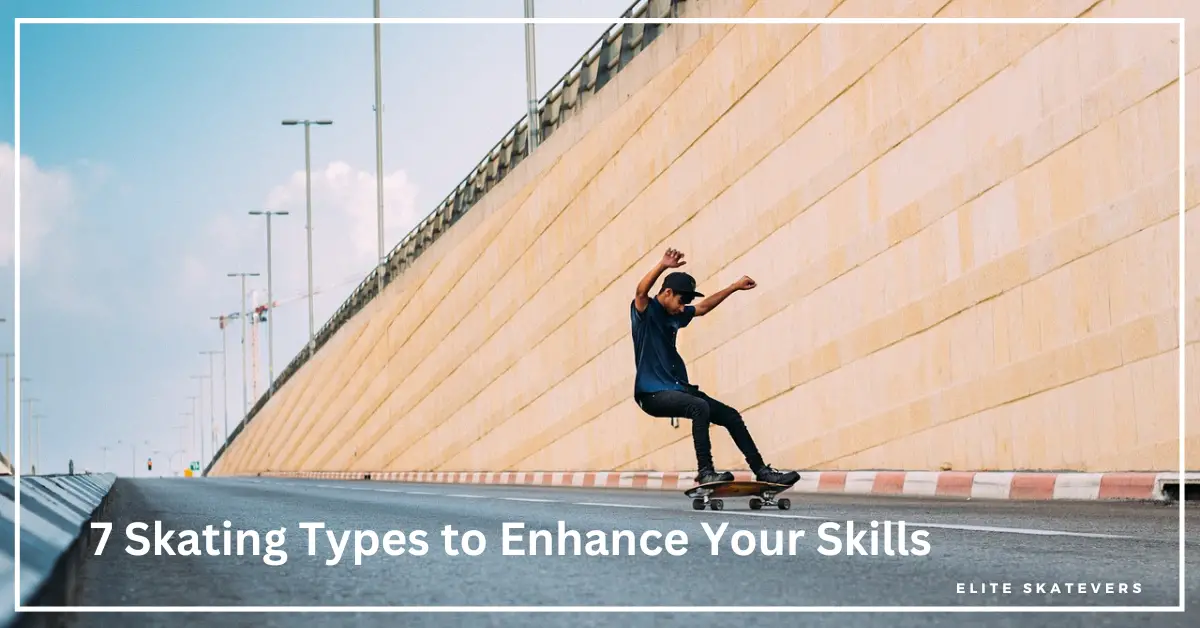Skating is a recreational and competitive activity where individuals glide over a surface using skates. The main types of skating include ice skating, roller skating, inline skating, adaptive skating, surf skating, skateboard skating, and longboard skating. Skating offers numerous benefits, such as improving cardiovascular health, enhancing balance and coordination, strengthening muscles, and reducing stress.
To get started in skating, beginners should choose the type of skating they are interested in, invest in appropriate safety gear, and practice basic techniques under the guidance of a coach or through instructional videos.
Different skating competitions include figure skating championships, speed skating races, roller derby, skateboarding contests, and aggressive skating tournaments. Various types of skating races include short track speed skating, long track speed skating, marathon roller races, and inline skating time trials.
Skating provides a fun and effective way to stay active and develop a wide range of physical skills.
What are the different types of skating?
There are seven main types of skating including;
- Ice skating
- Roller skating
- Inline skating
- Adaptive skating
- surf skating
- skateboard skating
- longboard skating
1. Ice skating
Ice skating is the activity of gliding over ice surfaces using boots fitted with metal blades. The main types of ice skating include figure skating, speed skating, ice hockey, and recreational skating.
Specific types of skates used in ice skating are:
- Figure skates
- Hockey skates
- Speed skates
- Recreational skates
Other unique equipment and gear needed for ice skating include helmets, knee pads, elbow pads, wrist guards, and, in the case of ice hockey, additional protective gear such as shoulder pads, shin guards, and gloves.
The main benefits of ice skating are improving cardiovascular health, enhancing balance and coordination, building muscle strength, and providing a low-impact exercise that is easy on the joints.
Ice skating is unique compared to other types of skating because it requires gliding on frozen surfaces, which demands different techniques for balance and movement, offering distinct challenges and aesthetics in sports like figure skating and ice hockey.
| Skate Type | Features |
| Figure skates | Toe picks for jumps and spins, longer blades for stability |
| Hockey skates | Rounded blades for quick turns, reinforced for protection |
| Speed skates | Long blades for maximum glide, low-cut boots for mobility |
| Recreational skates | Comfortable, versatile, suitable for casual ice skating |
Ice skating offers unique experiences through its various disciplines, combining artistry, speed, and precision on ice, setting it apart from other forms of skating.
2. Roller skating
Roller skating is the activity of gliding over surfaces using boots fitted with four wheels arranged in a rectangular pattern. The main types of roller skating include artistic skating, roller derby, speed skating, and recreational skating.
Specific types of skates used in roller skating are:
- Artistic skates
- Derby skates
- Speed skates
- Recreational skates
Other unique equipment and gear needed for roller skating include helmets, knee pads, elbow pads, wrist guards, and, for roller derby, additional protective gear such as mouthguards and padded shorts.
The main benefits of roller skating are improving cardiovascular health, enhancing balance and coordination, strengthening leg muscles, and providing a fun, low-impact workout that is easy on the joints.
Roller skating is unique compared to other types of skating because of its wheel configuration, which provides stability and allows for a variety of skating styles and disciplines, from artistic performances to high-speed races.
| Skate Type | Features |
| Artistic skates | High boots for ankle support, precision wheels for control |
| Derby skates | Durable, reinforced for contact, low-cut for mobility |
| Speed skates | Lightweight, low-cut boots, designed for high speed |
| Recreational skates | Comfortable, versatile, suitable for casual skating |
Roller skating offers a diverse range of styles and disciplines, making it a versatile and enjoyable activity for people of all ages and skill levels.
3. Inline skating
Inline skating is a type of skating that involves gliding on surfaces using boots with wheels aligned in a single row. The main types of inline skating include recreational skating, fitness skating, aggressive skating, freestyle skating, speed skating, and roller hockey.
Specific types of skates used in inline skating are:
- Recreational skates
- Fitness skates
- Aggressive skates
- Freestyle skates
- Speed skates
- Hockey skates
Other unique equipment and gear needed for inline skating include helmets, knee pads, elbow pads, wrist guards, and sometimes a mouth guard, especially for aggressive skating.
The main benefits of inline skating are improving cardiovascular health, enhancing balance and coordination, strengthening leg muscles, and providing a low-impact workout that reduces stress on the joints.
Inline skating is unique compared to other types of skating due to its wheel alignment, which allows for greater speed and maneuverability, making it suitable for a variety of skating disciplines.
| Skate Type | Features |
| Recreational skates | Comfortable, versatile, suitable for casual skating |
| Fitness skates | Designed for exercise, better support, and durability |
| Aggressive skates | Reinforced for tricks, smaller wheels for control |
| Freestyle skates | Highly maneuverable, used for slalom and tricks |
| Speed skates | Lightweight, larger wheels for high speed |
| Hockey skates | Designed for quick turns and stops, used in roller hockey |
Inline skating offers a unique combination of speed, agility, and versatility, making it distinct from other forms of skating.
4. Adaptive skating
Adaptive skating involves tailored skating activities for individuals with disabilities, ensuring inclusivity and accessibility. The main types of adaptive skating include sledge hockey, sled skating, and wheelchair skating.
Specific types of skates used in adaptive skating are:
- Sled skates
- Adaptive ice skates
- Wheelchair skates
Other unique equipment and gear needed for adaptive skating depend on the individual’s needs and may include specialized sleds, harnesses, and adaptive sports equipment tailored to their mobility requirements.
The main benefits of adaptive skating are promoting physical activity, enhancing social interaction, boosting confidence and self-esteem, and providing individuals with disabilities the opportunity to participate in recreational and competitive sports.
Adaptive skating is unique compared to other types of skating because it focuses on accommodating and empowering individuals with disabilities, providing customized equipment and support to ensure their full participation in skating activities.
| Skate Type | Features |
| Sled skates | Equipped with runners or blades to glide over ice while seated |
| Adaptive ice skates | Customized boots and attachments for individuals with mobility needs |
| Wheelchair skates | Designed to attach to wheelchairs, allowing for skating movement |
Adaptive skating serves as a platform for individuals with disabilities to enjoy the benefits of skating and actively participate in recreational and competitive skating activities.
5. Surf skating
Surf skating is a form of skateboarding that simulates the experience of surfing on land by using specially designed skateboards that allow for fluid, carving movements. The main types of surf skating include cruiser boards and performance surf skates.
Specific types of skates used in surf skating are:
- Cruiser surf skates
- Performance surf skates
Other unique equipment and gear needed for surf skating may include helmets, knee pads, elbow pads, and wrist guards to ensure safety during rides.
The main benefits of surf skating are improving balance and coordination, enhancing core strength, providing a cardiovascular workout, and offering a fun, low-impact exercise that mimics the feeling of surfing.
Surf skating is unique compared to other types of skating because it focuses on replicating the dynamic and flowing movements of surfing, making it a popular choice for surfers who want to practice their skills on land or for those who enjoy the surf-like experience without needing to be near the ocean.
| Skate Type | Features |
| Cruiser surf skates | Designed for casual riding and commuting, smooth ride |
| Performance surf skates | Built for more technical maneuvers and tricks, agile |
Surf skating offers a unique blend of surfing and skateboarding, allowing riders to experience the thrill of surfing on various terrains while reaping the physical benefits of an engaging and enjoyable sport.
6. Skateboard skating
Skateboard skating involves riding and performing tricks using a skateboard, which consists of a flat board with four wheels attached by two trucks. The main types of skateboard skating include street skating, vert skating, park skating, and freestyle skating.
Specific types of skates used in skateboard skating are:
- Street skateboards
- Vert skateboards
- Park skateboards
- Freestyle skateboards
Other unique equipment and gear needed for skateboard skating include helmets, knee pads, elbow pads, wrist guards, and skate shoes for better grip and control.
The main benefits of skateboard skating are improving balance and coordination, enhancing physical fitness, developing creativity through tricks, and fostering a sense of community among skaters.
Skateboard skating is unique compared to other types of skating due to its emphasis on tricks and maneuvers performed on various urban obstacles, such as rails, stairs, and ramps, providing a versatile and creative form of physical expression.
| Skate Type | Features |
| Street skateboards | Lightweight, designed for tricks on flat surfaces |
| Vert skateboards | Wider deck, designed for ramps and vertical drops |
| Park skateboards | Versatile, suitable for both street and vert elements |
| Freestyle skateboards | Narrower deck, optimized for technical tricks |
Skateboard skating offers a dynamic and engaging way to stay active, improve physical skills, and express creativity through an array of tricks and techniques tailored to various environments and styles.
7. Longboard skating
Longboard skating involves riding a longboard, a type of skateboard characterized by its extended length and stability. The main types of longboard skating include downhill, cruising, freeride, and dancing.
Specific types of skates used in longboard skating are:
- Downhill longboards
- Cruising longboards
- Freeride longboards
- Dancing longboards
Other unique equipment and gear needed for longboard skating include helmets, slide gloves, knee pads, elbow pads, and sometimes leather suits for high-speed downhill racing.
The main benefits of longboard skating are enhancing balance and coordination, providing a low-impact cardiovascular workout, improving leg strength, and offering a versatile way to commute or enjoy recreational activities.
Longboard skating is unique compared to other types of skating due to its emphasis on stability and speed, making it suitable for long-distance travel, high-speed downhill racing, and fluid, expressive movements in freeriding and dancing.
| Skate Type | Features |
| Downhill longboards | Stiff deck, wide trucks, designed for high-speed stability |
| Cruising longboards | Flexible deck, softer wheels, designed for smooth rides |
| Freeride longboards | Versatile deck, slide wheels, designed for tricks/slides |
| Dancing longboards | Longer deck, ample foot space, designed for dance moves |
Longboard skating provides a dynamic and enjoyable form of exercise, allowing for various styles and experiences, from high-speed descents to graceful dance routines on the board.
What are the benefits of skating?
There are seven main benefits of skating, including;
- Cardiovascular health: Skating is an excellent aerobic exercise, enhancing heart health by increasing heart rate and improving blood circulation.
- Strength training: Skating builds muscle strength, particularly in the legs and core, by engaging various muscle groups during movement.
- Weight loss: As a high-calorie-burning activity, skating aids in weight management by helping to shed excess body fat.
- Stress reduction: Skating promotes the release of endorphins, which help reduce stress levels and improve mood.
- Balance and coordination: Regular skating enhances balance and coordination by requiring precise control and movement adjustments.
- Joint health: Unlike high-impact sports, skating is gentle on the joints, reducing the risk of injury while still providing a thorough workout.
- Diabetes management: Skating can help manage diabetes by improving insulin sensitivity and aiding in blood sugar control.
How to learn skating step by step?
To learn skating step by step, follow these key steps:
- Identify the type of skating that interests you, such as ice skating, roller skating, inline skating, or skateboarding.
- Get a skating instructor to provide professional guidance and ensure you learn the correct techniques from the start.
- Avail appropriate gear and equipment, including skates suitable for your chosen type of skating, protective gear like helmets, knee pads, and elbow pads.
- Learn the basic skating techniques according to your preferred skating type, focusing on essential movements like gliding, stopping, and turning.
- Focus on perfecting the skating techniques by practicing regularly and paying attention to improving your balance, control, and speed.
- Train more often to get better, gradually increasing the complexity of your moves and incorporating more advanced techniques as your confidence and skill grow.
What are fundamental skating skills?
Fundamental skating skills include the following;
| Skill | Sub-Skill/Component | Description |
| Balance | Static Balance | Standing still on skates without moving. |
| Dynamic Balance | Maintaining stability while moving. | |
| Weight Shifting | Shifting weight smoothly from one foot to the other. | |
| Posture | Knee Bend | Keeping knees slightly bent to lower the center of gravity. |
| Upper Body Alignment | Keeping the back straight and shoulders aligned. | |
| Head Position | Keeping the head up and looking forward. | |
| Forward Movement | Stride | Extending one leg while pushing off the other. |
| Glide | Maintaining momentum on one foot. | |
| Recovery | Bringing the pushing leg back under the body for the next stride. | |
| Stopping | T-Stop | Dragging one skate perpendicular behind the other. |
| Plow Stop | Spreading skates apart and angling the toes inward. | |
| Heel Brake | Applying pressure to the heel brake on inline skates. | |
| Turning | Crossover | Crossing one foot over the other for sharper turns. |
| Carving | Leaning into turns with both skates on the ground. | |
| Swizzles | Creating a “V” shape with skates and pushing outward for turns. | |
| Backward Skating | Backward Stride | Pushing off one skate while gliding backward. |
| Backward Glide | Maintaining balance while moving backward. | |
| Backward Crossovers | Crossing one foot over the other while skating backward. | |
| Jumping | Two-Foot Jump | Jumping off and landing on both skates. |
| One-Foot Jump | Jumping off one skate and landing on the same or the other skate. | |
| Landing | Bending the knees to absorb the impact of landing. | |
| Agility | Quick Turns | Making rapid directional changes. |
| Footwork Drills | Practicing various foot movements for better control. | |
| Obstacle Navigation | Skating around and over obstacles. | |
| Edge Control | Inside Edges | Leaning inward on the inside edges of the skates. |
| Outside Edges | Leaning outward on the outside edges of the skates. | |
| Edge Transitions | Switching smoothly between inside and outside edges. | |
| Speed Control | Pacing | Managing speed through controlled strides. |
| Acceleration | Increasing speed with powerful pushes. | |
| Deceleration | Reducing speed through controlled stops and coasting. |
How can I practice skating at home?
To practice skating at home, perform off-ice exercises, practice balance training, incorporate strength training, execute technique practice, and perform flexibility and stretching.
- Off-Ice Exercises: Simulate skating movements without skates, such as lateral lunges and single-leg squats, to improve muscle memory and strength.
- Practice Balance Training: Use balance boards or stability balls to enhance stability and core strength, essential for maintaining control while skating.
- Incorporate Strength Training: Focus on leg and core exercises like squats, lunges, and planks to build the strength needed for powerful strides and jumps.
- Execute Technique Practice: Practice specific skating techniques such as turns and stops on a smooth surface, using a gliding board or sliders to mimic the motion of skating.
- Perform Flexibility and Stretching: Engage in regular stretching routines targeting the lower body and core to increase flexibility, which aids in executing more complex skating maneuvers.
What to do first time skating?
The first time you go skating;
- Choose the Right Skates: Select skates that fit well and are appropriate for your skating type (inline, quad, ice, skateboard, etc). Properly fitted skates ensure comfort and control.
- Wear Appropriate Safety Gear: Use a helmet, knee pads, elbow pads, and wrist guards to protect yourself from injuries. Safety gear is crucial for preventing injuries during falls.
- Practice Standing and Balancing: Before moving, practice standing and balancing on skates. Hold onto a stable surface if needed to gain confidence.
- Learn Basic Skating Techniques (Gliding, Stopping): Start with gliding forward, then practice stopping using techniques like the T-stop or plow stop. Mastering these basics ensures better control.
- Find a Safe, Beginner-Friendly Environment: Choose a flat, smooth surface like a rink or quiet pavement. Avoid crowded or uneven areas to reduce the risk of falls and collisions.
How many stages are there in skating?
There are five main stages of skating: Beginner Stage, Intermediate Stage, Advanced Stage, Competitive Stage, and Professional Stage.
- Beginner Stage: Skaters learn basic skills such as balancing, gliding, and stopping. This stage focuses on building confidence and foundational techniques.
- Intermediate Stage: Skaters develop more complex skills like turning, crossovers, and basic tricks. The emphasis is on improving control and maneuverability.
- Advanced Stage: Skaters master advanced techniques, including jumps, spins, and intricate footwork. This stage requires significant practice and dedication.
- Competitive Stage: Skaters participate in competitions, refine routines, and focus on performance quality. This stage involves rigorous training and skill enhancement.
- Professional Stage: Skaters perform at elite levels, often joining professional teams or shows. This stage demands exceptional skill, consistency, and professional commitment.
What is a Level 3 skater?
A Level 3 skater demonstrates intermediate skating proficiency, characterized by improved balance, control, and coordination. This skater can execute basic turns, stops, and maneuvers with confidence, and is beginning to learn more complex skills such as crossovers and basic spins. Level 3 skaters exhibit better technique and consistency compared to beginners, showing readiness to advance to more challenging elements of skating.
What is goofy skating?
Goofy skating is a stance in skateboarding where the skater rides with their right foot forward and their left foot at the back, guiding and pushing the board. This is the opposite of the more common “regular” stance, where the skater leads with their left foot. Goofy stance is chosen based on the skater’s comfort and natural inclination, similar to being right- or left-handed. Skaters should experiment with both stances to determine which feels more natural.
How do I choose the best skate for beginners?
To choose the best skate for beginners, consider the following factors:
- Comfort: Skates should have ample padding and a design that reduces pressure points, ensuring prolonged use without discomfort. For example, skates with cushioned insoles and soft linings enhance user comfort.
- Fit: Properly fitting skates are essential to avoid blisters and ensure control. Beginners should try multiple sizes to find the best fit, ensuring the skates are snug but not too tight.
- Support: Good ankle support prevents injuries and improves stability. Skates with high cuffs and sturdy materials provide the necessary support for beginners.
- Type of Skate: Different skates serve various purposes, such as recreational, speed, or hockey skates. Beginners should choose recreational skates for their versatility and ease of use.
- Adjustability: Adjustable skates accommodate growing feet and varying skill levels. Skates with adjustable sizing features can be expanded as the user’s feet grow, making them cost-effective.
Which skate is best for beginners?
The best skate for beginners are quad skates. Quad skates provide excellent stability and balance, making them ideal for those new to skating. Their attributes include:
- Wide Wheelbase: The side-by-side wheel configuration offers a stable base, reducing the likelihood of falls.
- High Ankle Support: Sturdy boots provide significant ankle support, preventing injuries and enhancing control.
- Ease of Maneuverability: The design allows for easy turning and stopping, which is essential for beginners learning basic techniques.
- Comfort: Quad skates often have more padding, ensuring a comfortable fit for extended use.
- Versatility: Suitable for indoor and outdoor use, quad skates offer flexibility in skating environments.
These features make quad skates the ideal choice for those starting their skating journey, providing a safe and enjoyable learning experience.
What are the different types of skating competitions?
The different types of skating competitions include the following:
| Skating Discipline | Types of Skating Competitions |
| Figure Skating | Singles, Pairs, Ice Dance |
| Speed Skating | Long Track, Short Track |
| Roller Derby | Flat Track, Banked Track |
| Freestyle Skating | Slalom, Halfpipe, Park, Street |
| Ice Hockey | Men’s, Women’s, Youth, Recreational |
| Roller Hockey | Inline, Quad |
| Artistic Skating | Figures, Dance, Precision, Show |
| Synchronized Skating | Team, Mixed Age, Junior, Senior |
| Inline Skating | Inline Speed, Freestyle, Aggressive |
| Roller Skating | Rink Hockey, Artistic, Speed, Derby |
Is Skating a sport or a game?
Skating is primarily considered a sport rather than a game. Skating involves physical exertion, skill, and competition, meeting the criteria of a sport. Skating events often have rules, regulations, and structured competitions, distinguishing it from a casual game. Skating requires athleticism, training, and dedication, further supporting its classification as a sport.
How many jumps are there in skating?
There are six mainl types of jumps in skating, including the following;
- Toe Loop: A toe jump where the skater takes off from the back outside edge of one foot and lands on the same foot.
- Salchow: A jump where the skater takes off from the back inside edge of one foot and lands on the back outside edge of the opposite foot.
- Loop: A jump where the skater takes off and lands on the same edge and foot.
- Flip: A jump where the skater takes off from the back inside edge of one foot and lands on the back outside edge of the opposite foot.
- Lutz: A jump where the skater takes off from the back outside edge of one foot and lands on the back outside edge of the opposite foot, preceded by a counter-clockwise pivot.
- Axel: A jump that is launched forward from the outside edge of one foot and completed after one and a half rotations in the air.
How many types of skating races are there?
There are three main types of skating races:
- Long Track Speed Skating: Races take place on a 400-meter oval track. Skaters compete in events ranging from 500 meters to 10,000 meters, with the objective of completing the distance in the fastest time possible.
- Short Track Speed Skating: Races are held on a smaller, typically 111.12-meter oval track. Skaters compete in events such as the 500 meters, 1000 meters, and relay races. This format emphasizes agility and strategy due to the confined space.
- Marathon Skating: These races are long-distance events typically conducted on outdoor tracks or roads. Skaters cover distances ranging from 10 kilometers to 42 kilometers, with some marathon events extending beyond traditional marathon distances.
What is couple skating called?
Couple skating is commonly referred to as “pair skating.” Couple skating involves two skaters performing together, executing synchronized movements, lifts, spins, and jumps. Pair skating requires precise coordination, trust, and synchronization between the partners, making it a captivating and challenging discipline within figure skating.



